I had a coffee incident in Penn Station. It was rush hour and I was going against the flow into an oncoming hoard of commuters heading to work in the city. My arms were full of art materialspaper, cardboard, tape, tubes, ink, brayers, etc. and a well-placed shove from a passer-by sent my coffee cup cascading down my clothes. Silently, I cursed bringing too much gear. However, in hindsight, Im glad my arms were full.
It was Election Day, and I was riding the LIRR out to Long Island to lead a professional development workshop for art teachers in the Deer Park school district. The Director of Fine and Performing Arts in the district had paid for a three hour workshop for a wide range of art teachers working with K-12 students. In our planning meetings, he told me that he wanted a basic introduction to Himalayan art and culture for teachers unfamiliar with this area of the world. I liked this idea, and pushed hard for an art-making component; after all, these were art teachers. And with coffee dripping down my leg, I was paying the price for that insistence.
When I got the art room at Deer Park high school, I spread the art materials out and went over the lesson plan in my head for the hundredth time. We used PowerPoint to explore the geography, political borders, and climate of the Himalayas. Then we focused on centers of Buddhism, discussing images of monks, students, and finally mandalas. Here we shifted focus, and zoomed in on the variety of media used to create Buddhist mandalas, including paintings, sculptures, ritual tools, and sand.
After a coffee break (ha!) things really got interesting. I asked the art teachers to divide themselves into smaller groups, and then as a group to use the variety of art materials to create either a 2-dimensional or a 3-dimensional group mandala, using what they had learned about proper Buddhist mandalas. Their eyes lit up. Here, they had an hour of uninterrupted time to make art together. Each small group of teachers struggled with the problems that students face in group projects: How do we make a plan? How do we negotiate ideas? How do we help each other? How do we measure our own success?
Teachers told me that they almost never get a chance to do. Professional Development usually meant sitting and listening. They were thrilled to learn something, and then do something with that knowledge. I noticed that their art demonstrated a strong understanding of the symbolism of Buddhist mandalas I also noticed that this was not something they could necessarily have communicated with me verbally.
I got some interesting responses from the teachers on their post-workshop evaluations. Most emphasized the importance of doing rather than talking, and as think to the planning meetings, conference sessions, and gallery experiences that are part of my life, I find myself wondering: How can we bring this kind of experiential learning into other realms of our work?




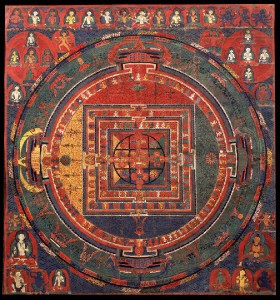
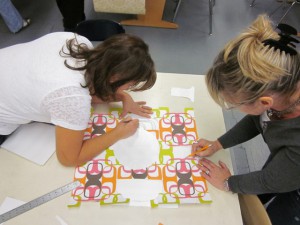
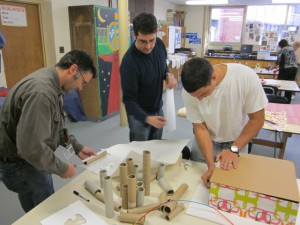
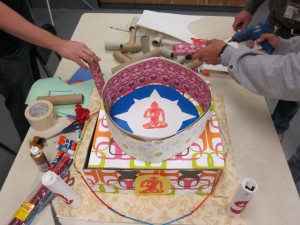
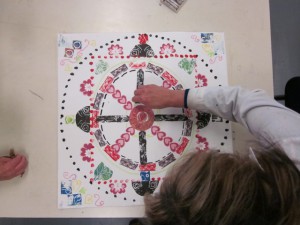
One Response to Professional Development, Art, and Problem Solving